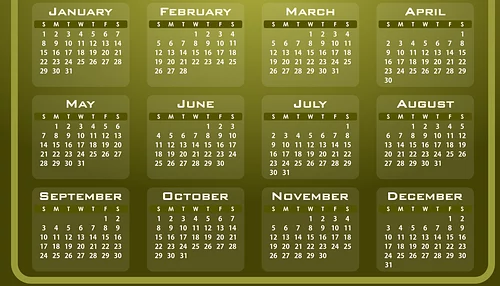Patient scheduling in a physician practice or any outpatient clinic is critical–to patients, providers, and staff. As one physician pointed out, everyone has different and competing interests.
Patients’ objective is to see their physician when they want to.
The doctor wants to see patients efficiently scheduled with no big breaks and without cancellations.
The nurses and MAs want the schedule to allow them to effectively complete their assessments in a manner that does not “back up” the flow of patients.
The registration and front desk staff want the schedule to be followed with minimal delays as they are the ones that have to manage those in the waiting room.
Everybody wants to go home on time!
With all these different objectives it takes real skill in developing and managing a scheduling system that satisfies all parties. Whether the clinic has a sophisticated electronic scheduling system or uses their own manual template, maximizing the positives and minimizing the negatives for all parties takes constant work.
Scheduling is usually the first encounter a patient will have with the clinic. In my personal experience, it defines the care experience I will have. Like any patient, I want to see the doctor when I need to–even if it is the same day. I want the appointment to start on time–after all, the clinic determined the time I was to arrive.
Covid-19 and Clinic Scheduling
The historical scheduling function has been vastly altered by the current pandemic. These changes have had both positive and negative effects. There is a lot of discussion on these effects so I am not going to pretend that I am an expert on these changes.
One of the most obvious changes is that telemedicine is here to stay. Prior to the pandemic, an office visit seemed to be required regardless of the reason for the call. Maybe you could fought a sinus or ear infection for weeks and finally knew that you needed an antibiotic to get over it. When you called your provider’s office and asked if you could get a prescription, you were told that an office visit was required. The soonest that you could be seen was 4 weeks out. If you couldn’t wait that long, you were directed to urgent care or the emergency room.
This is when the patient takes it out on the scheduler with comments like, “It seems I can only see my doctor for annual physicals and wellness visits. The urgent care center seems to be who takes care of my illnesses and injuries. Why even call my doctor my primary care physician? S/he isn’t involved in any of my urgent issues!
I know that is a common reaction because it has been mine. Now, most of these situations can be handled by a tele-visit. Somehow, the physician is now able to do much more without a required office visit. It makes some sense. Why bring a sick individual into the practice to spread their illness if it can be handled remotely?
The cynical side of me says that telemedicine has become more acceptable to the providers because payers are now willing to pay for these visits.
Regardless, if these visits are acceptable now they will continue to be acceptable in the future. The clinic scheduling function needs to be able to handle these visits. So, when we talk about improving the scheduling function we need to keep these realities in mind.
What does HR have to do with patient scheduling?
That is a good question. If you embrace the typical view of HR, the answer is probably, “nothing–the line manager is responsible for this function”. That is certainly true. There are two reasons for talking about scheduling. First, many people in clinic settings are clinic managers that also handle HR responsibilities. Secondly, I promote an expanded definition of HR that defines HR as being the experts in the utilization and management of human resources.
Notice that this includes “utilization”–how the employees are used. While the line manager is ultimately responsible for the work, HR should own the process improvement skills to assist the manager is continuously improving the work itself. Along with focusing on the talent, HR should also be focused on what we are asking them to do. This is part of HR’s ownership of productivity.
As I have asked several times, if HR does not own the skillset of improving the productivity and satisfaction of work processes, then who does? Line managers who are skilled in their individual disciplines may or may not have these abilities and so productivity and employee satisfaction will vary widely throughout the organization. HR needs to be the resource for assisting managers in process improvement–regardless of the process.
With that in mind, are there ways to improve the patient scheduling process?
6 factors to improve patient scheduling
- Embrace technology. No patient enjoys the process of calling for an appointment and spending 20 minutes in the queue listening to music and recorded messages. Younger patients want to open an app on their mobile device and self schedule. Many large practices have developing their own self scheduling apps or there are resources out there. Zocdoc is one, (although there is some dissatisfaction by larger groups with their pricing changes). Don’t use the excuse that your practice is comprised of primarily older patients. In many cases, somebody younger is helping them with the scheduling process. The technology is there. If you don’t want to open up the entire schedule, consider blocking out some time for self-scheduling or limiting it to certain call reasons.
- Block schedule time for tele-visits and complete all resulting orders during that time. It makes no sense to schedule telemedicine visits among in-person patient visits. Rather, schedule the tele-visits in one block of time. These visits can be more tightly scheduled as there is no room turnover, vital signs, etc. Consent forms, history, and other required paperwork can either be accomplished online, or emailed when the appointment is scheduled. It will speed up the process to have all patient charts sequentially arranged with a list of scheduled tele-visits and the reason. Since the patients are not onsite, it would be helpful to have either the nurse or an MA present to facilitate follow up. If the physician orders or modifies medicines or orders diagnostic tests or procedures, the nurse/MA can be processing those orders during the patient encounter–either via phone or another computer.
- Create a practice template whether using a manual or electronic scheduling system. One physician has suggested the easiest way to create a template is to identify the process that takes the least amount of time and then use increments of that time period for building a template. For example, if it is determined that the simplest visit requires 10 minutes, then use 10 minute increments for every other procedure. You may determine that an annual physical requires 30 minutes (3 increments). A new patient may require 60 minutes. By doing this for every procedure, more realistic scheduling can be achieved rather than using a standard visit time for all patients.
- Use historical data to alter scheduling templates. There is so much to be gained from mining your data that I will probably write a separate post on all that can be discovered. Two big things jump out. The first is overscheduling. With the best intentions, every available slot is filled. Every single day the physician falls behind and is running late by midmorning. I had this experience with a provider. On every visit I was told that the doctor was running 30 minutes late. One wonders why it never entered anyone’s mind to leave a 30 minute space in the schedule if this was routine. Duh. If the doctor consistently overbooks or falls behind, then build some unscheduled time into the schedule. This allows the doctor to “catch up” or at least reduce the delay, If everything is running smoothly, patients requesting same-day access can be scheduled into these times. The second thing is to know your patients. If Mrs. Jones is coming for an annual physical (30 minutes) but she always brings a journal of her bowel movements for review (true story!), than schedule extra time for her. One practice used an empty field on their electronic system to enter one letter codes to indicate patients that would require additional 5, 10, 15 minute visits.
- Allow time for same-day access. Even if your clinic does not endorse the open access model, you can allow some block time for those seeking same day access. It defeats the purpose of having a “primary care provider” if the patient is referred to urgent care for everything other than routine wellness visits. You should know how many requests there are for same-day access. Do they require an in-person visit or can they be handled via teleconference? If schedulers track requests for same-day visits and the reason, the clinic can understand how to accommodate these. If the data shows that the clinic routinely gets 5 requests for same day visits, then reserve this block of time or add to teleconference block if that is the way to handle it. If you are afraid that money will be lost by reserving time that will not be used, schedule slightly less than what the data shows is normal. Improved access is a huge satisfier for the patient and allow the clinic to capture revenue that would have gone elsewhere. By obtaining and using data, you can understand how to build this into the schedule.
- Know your cancellation rate. Blocking time for telemedicine or same day access will negatively impact the schedule (and revenue) if the cancellation rate is ignored. If the practice has a high cancellation rate, then that should be taken into account when scheduling. Generally, the farther out that appointments are scheduled, the greater the cancellations. It is important that you have the data and understand it. If you have the lowest number of cancellations that will occur on any given day, then you can probably safely overbook by the same number. Know the data is critical. Are there differences based upon the time of year? Are there higher cancellations based upon the day of the week? Do certain patient age groups have higher rates of cancellation? Do certain visit types result in more cancellations? Knowing what causes cancellations will help you manage the schedule and the patient much more successfully.
Common sense
All of these apply whether an electronic or manual system is used. None of it is rocket science and should be part of the normal way scheduling is continuously improved. Hard data will allow you constantly be modifying this process. While this easier to obtain with electronic scheduling systems, it still can be done manually. While many HR people will never have to work with patient scheduling, many of you who work in clinics do more than HR and you may be the clinic manager.






One thought on “6 Factors of Successful Clinic Scheduling”